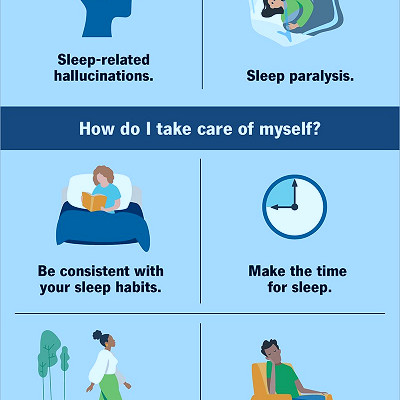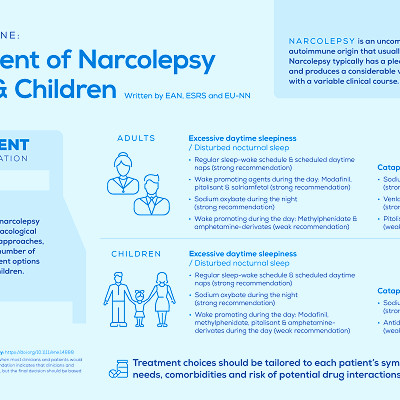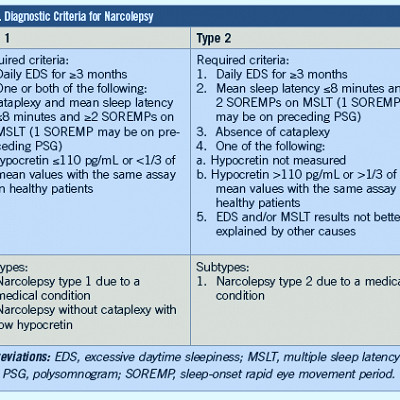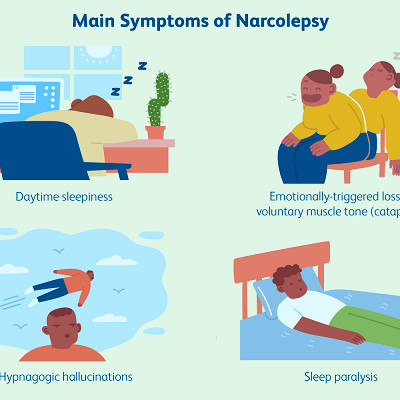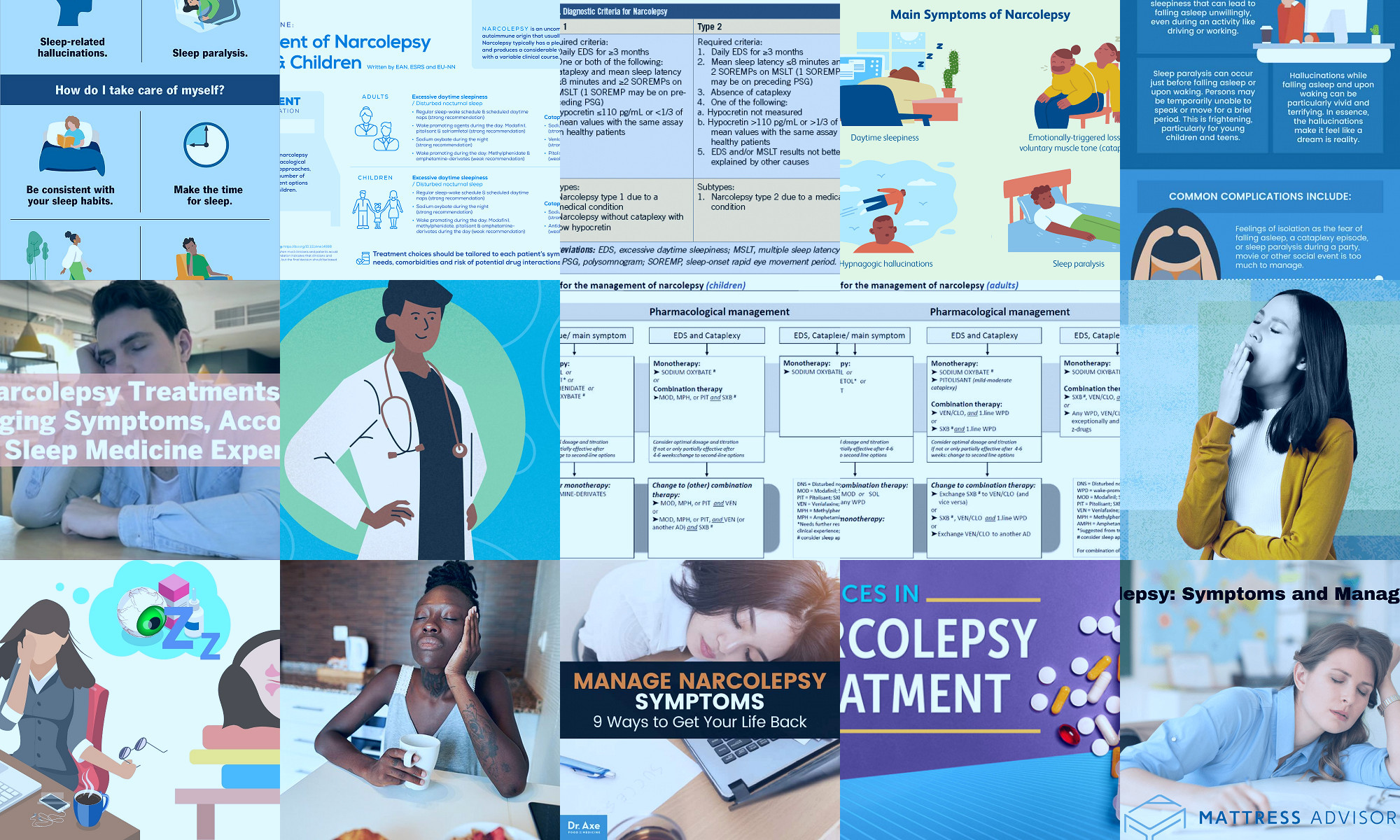 Jarlat Maletych/Shutterstock
Jarlat Maletych/Shutterstock
Features
Understanding Narcolepsy
Narcolepsy is a chronic neurological disorder that affects the brain's ability to regulate the sleep-wake cycle. It is characterized by excessive daytime sleepiness, sudden loss of muscle tone (cataplexy), sleep paralysis, and hallucinations.
Prevalence and Impact
It's estimated that about 1 in 2,000 people are affected by narcolepsy. This disorder often begins in adolescence or young adulthood and can significantly impact a person's quality of life, affecting their social, academic, and professional performance.
The Role of Hypocretin
Research has linked narcolepsy to a deficiency in hypocretin, a neurotransmitter that regulates arousal and wakefulness. In individuals with narcolepsy, there is often a significant reduction in hypocretin-producing neurons in the brain.
Diagnosis
Diagnosing narcolepsy involves a detailed medical history, physical examination, and specialized sleep studies such as polysomnography and multiple sleep latency tests.
Medication Management
While there is no cure for narcolepsy, symptoms can be managed with medications like stimulants, sodium oxybate, and selective serotonin and norepinephrine reuptake inhibitors.
Stimulants
Drugs like modafinil and armodafinil are commonly used to combat the excessive daytime sleepiness associated with narcolepsy.
Sodium Oxybate
This medication is highly effective for treating cataplexy and improving nighttime sleep, which is often poor in narcolepsy patients.
Antidepressants
Selective serotonin and norepinephrine reuptake inhibitors (SSRIs or SNRIs) can help manage symptoms of cataplexy.
Lifestyle Modifications
Along with medication, certain lifestyle changes can also help manage narcolepsy symptoms. Regular exercise, maintaining a healthy diet, avoiding caffeine and alcohol, and practicing good sleep hygiene can all contribute to better symptom control.
Scheduled Napping
Short, scheduled naps throughout the day can help control daytime sleepiness and provide an energy boost.
Psychological Support
Living with narcolepsy can be challenging and may lead to feelings of isolation or depression. Counseling or joining a support group can provide emotional support and coping strategies.
Emerging Treatments
Research on new treatments for narcolepsy is ongoing. Recent studies have focused on hypocretin replacement therapy and immunotherapy as potential future treatment options.
Managing Narcolepsy at Work
Individuals with narcolepsy may need workplace accommodations, such as a flexible schedule or a private place for napping, to manage their symptoms.
Narcolepsy and Driving
Because of the sudden onset of sleep episodes, individuals with narcolepsy may have restrictions on their driving privileges for safety reasons.
Awareness and Advocacy
Increasing awareness and understanding of narcolepsy can reduce stigma, improve diagnosis rates, and lead to better support for those living with this disorder.
Role of Regular Sleep Schedule
Maintaining a regular sleep schedule can stabilize the body's sleep-wake cycle and reduce narcolepsy symptoms.
Importance of Regular Medical Follow-up
Regular check-ups with a healthcare provider are crucial to monitor the effectiveness of treatment, manage side effects, and adjust treatment as necessary.
Impact on Social Life
Narcolepsy can impact a person's social life due to excessive daytime sleepiness and other symptoms. Strategies such as explaining the condition to friends and planning activities during peak alertness times can help.
Coping Mechanisms
Developing effective coping strategies, such as stress management techniques and mindfulness, can help individuals with narcolepsy manage their symptoms and improve their quality of life.
The Future of Narcolepsy Treatment
As our understanding of narcolepsy and its underlying causes continues to improve, the hope is for the development of more effective and targeted treatments in the future.
Interesting notes and facts
1. Understanding Narcolepsy: Narcolepsy is a chronic neurological disorder that affects the brain's ability to regulate sleep-wake cycles. People with this condition often experience persistent daytime sleepiness and sudden bouts of sleep, even if they have had a full night's sleep. It's not just about feeling sleepy; narcolepsy can drastically affect your life, leading to challenges in work, social activities, and overall well-being.2. The Role of Hypocretin: Scientists believe that narcolepsy may be due to a deficiency in hypocretin, a neurochemical in your brain that regulates arousal, wakefulness, and appetite. The loss of this chemical in people with narcolepsy is often associated with two major symptoms, excessive daytime sleepiness and abnormal REM sleep.
3. Stimulants- A Common Treatment: Stimulants are often used to manage narcolepsy. These medications, such as modafinil, help increase alertness and reduce the symptoms of excessive daytime sleepiness. However, like all medications, they come with potential side effects, including headaches, nausea, and anxiety.
4. Sodium Oxybate: Sodium oxybate is used to treat cataplexy, a common symptom of narcolepsy that involves sudden muscle weakness or loss of muscle control. Taken at night, it can also help improve nighttime sleep, which is often poor in narcolepsy.
5. Importance of Good Sleep Hygiene: In addition to medication, maintaining good sleep hygiene is crucial in managing narcolepsy. This includes a regular sleep schedule, avoiding caffeine and alcohol, and creating a comfortable sleep environment.
6. Lifestyle Modifications: Regular exercise, a healthy diet, and avoiding nicotine can also help reduce the symptoms of narcolepsy. Certain activities, such as yoga and meditation, may help improve sleep quality and reduce stress.
7. Cognitive Behavioral Therapy (CBT): CBT is a type of counseling that can be helpful for people with narcolepsy. It focuses on identifying and changing negative thought patterns and behaviors that can worsen sleep problems.
8. Support Groups: Joining a support group can provide emotional support and shared experiences, which can be very beneficial for people dealing with narcolepsy. It's a space to share coping strategies and to feel understood and less alone.
9. Emerging Treatments: Research is ongoing to find new treatments for narcolepsy. One innovative approach is the use of hypocretin replacement therapy, where the missing neurochemical is replaced through nasal drops or a spinal fluid injection.
10. The Future of Narcolepsy Treatment: With advances in research and understanding of narcolepsy, the future of treatment looks promising. The goal is not just to manage symptoms, but to improve quality of life for those living with this challenging condition.
Vocabulary
- Narcolepsy – A neurological disorder that affects the control of sleep and wakefulness, causing excessive daytime sleepiness and intermittent, uncontrollable episodes of falling asleep.
- Cataplexy – A sudden loss of muscle tone that leads to feelings of weakness and a loss of voluntary muscle control, often triggered by intense emotions.
- Sleep Paralysis – A temporary inability to move or speak while falling asleep or upon waking.
- Hypnagogic Hallucinations – Vivid, often frightening, dream-like experiences that occur while dozing or falling asleep.
- Hypnopompic Hallucinations – Similarly vivid and frightening, these occur upon waking from sleep.
- REM Sleep – Rapid eye movement sleep, a phase of sleep during which dreams occur.
- Sleep Cycle – The pattern of REM and non-REM sleep stages in a typical night.
- Sleep Onset – The transition from wakefulness into sleep.
- Sleep Hygiene – Practices and habits that are conducive to sleeping well on a regular basis.
- Hypersomnia – Excessive sleepiness, which may manifest as prolonged nighttime sleep, excessive daytime sleepiness, or both.
- Stimulants – Drugs that increase activity in the brain, increasing alertness and wakefulness.
- Sodium Oxybate – A medication used to treat cataplexy and excessive daytime sleepiness in patients with narcolepsy.
- Modafinil – A medication that promotes wakefulness, often used in the treatment of narcolepsy.
- Antidepressants – Medications that can help manage symptoms of depression, some of which are used to suppress REM sleep in people with narcolepsy.
- Lifestyle Modifications – Changes made to one's daily routines or habits in order to manage a condition or improve overall health.
- Napping – A short period of sleep, often used as a strategy to manage excessive daytime sleepiness.
- Sleep Schedule – The timing and duration of sleep, ideally, should be consistent from day to day.
- Diet – The types and amounts of food one consumes.
- Exercise – Physical activity that is planned, structured, and repetitive for the purpose of conditioning the body.
- Sleep Disorders – Conditions that disturb the normal sleep pattern.
- Cognitive Behavioral Therapy – A type of psychotherapy that can help people change unhelpful thinking and behavior patterns.
- Polysomnogram – A sleep study that electronically transmits and records specific physical activities while you sleep.
- Multiple Sleep Latency Test – A test that measures the speed of falling asleep.
- Neurologist – A doctor specializing in the treatment of diseases of the nervous system.
- Sleep Specialist – A doctor who diagnoses and treats sleep disorders.
- Sleep diary – A record of an individual's sleeping and waking times with related information.
- Daytime Sleepiness – A common symptom of several sleep disorders, characterized by persistent sleepiness and often a general lack of energy, even after apparently adequate night time sleep.
- Insomnia – A sleep disorder that is characterized by difficulty falling and/or staying asleep.
- Automatic behavior – Performing routine tasks without conscious control or memory.
- Genetic factors – Genes that may contribute to the development of certain conditions.
- Sleep attacks – Sudden, irresistible episodes of sleep that can occur at any time, even during activities.
- Fragmented sleep – Sleep that is interrupted by frequent awakenings or arousals.
- Vivid dreaming – Dramatic dreams that may be easily remembered and often involve intense emotions.
- Sleep-related eating disorder – A condition characterized by abnormal eating patterns during the night.
- Sleep walking – Performing activities that are usually performed during a state of full wakefulness while asleep.
- Sleep talking – Talking during sleep without being aware of it.
- Nightmares – Disturbing dreams that can interrupt sleep.
- Sleep deprivation – Lack of sufficient sleep, a condition that can be chronic or acute.
- Sleep apnea – A potentially serious sleep disorder in which breathing repeatedly stops and starts.
- Restless legs syndrome – A condition characterized by a nearly irresistible urge to move the legs, typically in the evenings.
- Periodic limb movement disorder – A condition characterized by repetitive movements of the limbs during sleep.
- Sleep-related hallucinations – Hallucinations that occur when falling asleep or waking up.
- Nocturnal sleep – Sleep that occurs during the night.
- Sleep study – Tests that monitor body functions such as brain waves, heartbeat, breathing and movement during sleep.
- Caffeine – A stimulant that can interfere with sleep.
- Alcohol – A substance that can cause sleep disturbances.
- Sleep latency – The amount of time it takes to go from full wakefulness to sleep.
- Microsleep – Brief, unintended episodes of loss of attention associated with events such as blank stare, head
